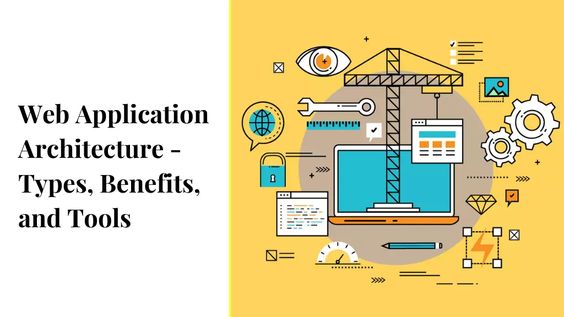I. Introduction
In the ever-evolving landscape of web development, the Microservices Architecture has emerged as a groundbreaking approach to building web applications. This architecture breaks down applications into small, independent services, providing numerous benefits over traditional monolithic and service-oriented architectures. In this article, we delve into the concept of Microservices Architecture, its advantages, challenges, and best practices, as well as its future trends in modern web app development.
II. Understanding Microservices Architecture
A. The Concept of Decentralized Architecture in Microservices
Microservices Architecture follows a decentralized approach, where applications are composed of several loosely coupled services. Each service is designed around a specific business capability, promoting modularity and scalability.
B. Service-Oriented Architecture (SOA) vs. Microservices: Key Differences
Comparing Microservices with Service-Oriented Architecture (SOA) reveals distinct differences in granularity, communication patterns, and technology stack. Microservices’ focus on independent services sets it apart from SOA’s more monolithic nature.
C. Advantages of Adopting Microservices for Web App Development
The adoption of Microservices Architecture offers various advantages, including improved scalability, flexibility, fault isolation, and enhanced team productivity. These benefits contribute to a more agile and responsive development process.
III. Key Benefits of Microservices Architecture
A. Scalability: Horizontal and Vertical Scaling of Microservices
Microservices’ modular nature enables businesses to scale individual services independently, allowing for efficient resource utilization and cost optimization. Horizontal and vertical scaling become feasible without affecting the entire application.
B. Flexibility: Independent Development and Deployment of Microservices
Developers can work on different services independently, enabling parallel development and rapid iterations. This flexibility reduces the time-to-market for new features and updates.
C. Enhanced Fault Isolation: Minimizing the Impact of Failures
Microservices’ isolated nature ensures that failures in one service do not propagate to others, thus enhancing fault tolerance and system reliability.
D. Improved Team Productivity: Parallel Development and Rapid Iterations
Decoupled services enable development teams to work independently on different components, leading to increased productivity and better collaboration.
IV. Communication between Microservices
A. Synchronous vs. Asynchronous Communication in Microservices
Microservices can communicate synchronously or asynchronously, depending on the use case. Understanding the differences between these communication patterns is crucial for designing efficient interactions.
B. Implementing Communication Patterns: RESTful APIs, gRPC, and Event-Driven Architecture
Microservices typically communicate via RESTful APIs, but other communication patterns like gRPC and event-driven architecture offer specific benefits for different scenarios.
C. API Gateways and Service Discovery for Efficient Communication
API gateways and service discovery mechanisms streamline communication between microservices, providing centralized access points and ensuring dynamic service discovery.
V. Data Management in Microservices
A. Database Per Microservice vs. Shared Databases: Choosing the Right Approach
The decision to use a separate database for each microservice or shared databases depends on data consistency and business requirements.
B. Consistency and Data Integrity in Distributed Systems
Maintaining data consistency and integrity across distributed systems is a challenge that requires careful design and implementation.
C. Caching Strategies for Microservices
Caching mechanisms play a vital role in optimizing the performance of microservices, reducing latency, and minimizing redundant data retrieval.
VI. Challenges of Microservices
A. Complexity in Microservices: Managing Multiple Services and Dependencies
The decentralized nature of microservices introduces complexity in managing multiple services and their dependencies. Adopting proper governance and architectural practices is essential.
B. Ensuring Consistency and Data Synchronization Across Microservices
Maintaining data consistency across microservices while adhering to eventual consistency principles requires careful consideration and planning.
C. Monitoring and Debugging Distributed Systems
Monitoring and debugging distributed systems present unique challenges that require robust logging and monitoring strategies.
VII. Testing and Monitoring in Microservices
A. Strategies for Unit Testing and Integration Testing in Microservices
Unit testing and integration testing are critical to ensuring the reliability and functionality of microservices.
B. Implementing Monitoring and Logging for Effective Issue Detection
Effective monitoring and logging mechanisms are vital for identifying issues, analyzing system performance, and ensuring high availability.
C. Continuous Integration and Continuous Deployment (CI/CD) in Microservices
Implementing CI/CD pipelines ensures automated and rapid deployment of microservices, promoting continuous improvement and delivery.
VIII. Microservices Best Practices
A. Designing Microservices with a Single Responsibility in Mind
Following the Single Responsibility Principle (SRP) ensures that each microservice focuses on a specific business capability.
B. Applying the Twelve-Factor App Methodology
The Twelve-Factor App methodology provides guidelines for building scalable, maintainable, and portable applications, aligning well with Microservices Architecture.
C. Using Containers and Container Orchestration for Microservices
Containerization, with tools like Docker and Kubernetes, simplifies deployment and management of microservices, enabling scalability and portability.
IX. Future Trends in Microservices
A. Serverless Computing and its Implications on Microservices
Serverless computing complements Microservices Architecture, allowing developers to focus on writing code without managing infrastructure.
B. The Role of AI and Machine Learning in Microservices
The integration of AI and Machine Learning capabilities into microservices opens up new possibilities for intelligent and data-driven applications.
C. Progressive Web Apps (PWAs) and Microservices: Enhancing User Experience
Combining PWAs and Microservices Architecture results in responsive, fast, and user-centric web applications.
X. Conclusion
In conclusion, Microservices Architecture is revolutionizing web app development by promoting scalability, flexibility, and fault isolation. The benefits of independent development and enhanced team productivity make it a compelling choice for modern applications. However, adopting Microservices comes with its challenges, such as managing complexity and ensuring data consistency. By following best practices and staying abreast of future trends, businesses can harness the full potential of Microservices Architecture to build robust and innovative web applications that cater to the demands of the digital age.





